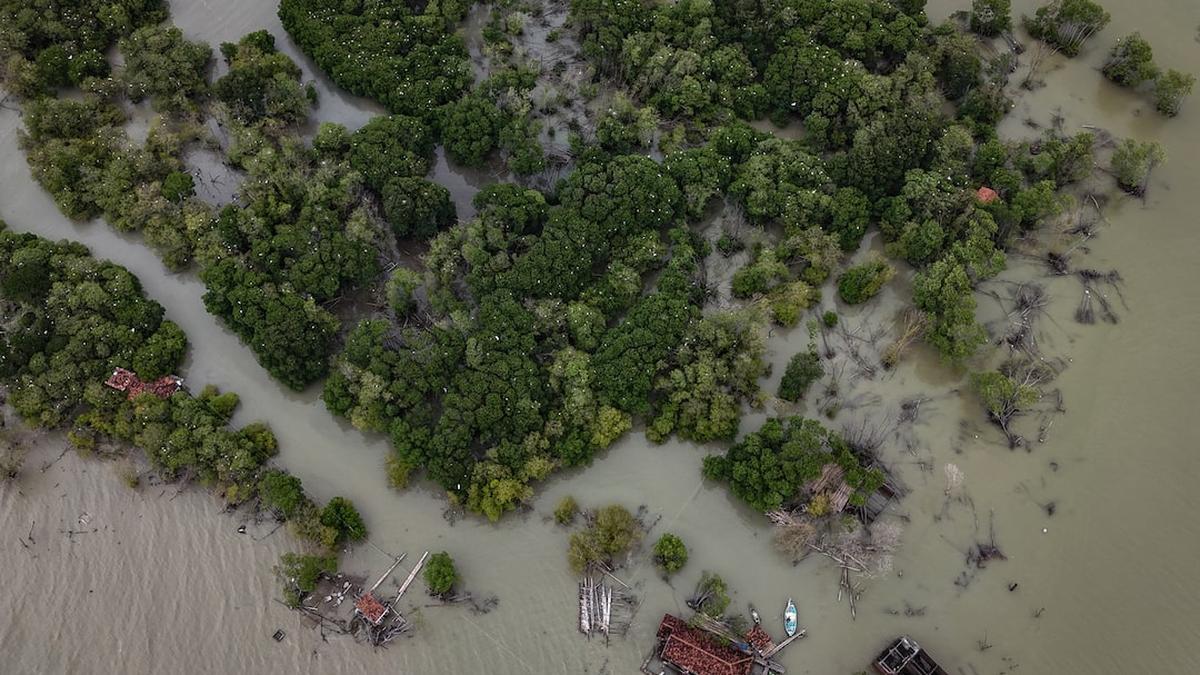A drone view of the house belonging to Pasijah and other buildings, surrounded by mangrove planted by her, in Rejosari Senik, February 19, 2025.
| Photo Credit: Reuters
Rejosari Senik is a hamlet in the Demak district of Indonesia’s Central Java province. In the 1970s, the distance between the hamlet and the nearest shoreline, on the Java Sea, was about 7 km. Today, the land on which the hamlet lies is permanently underwater.
Even by the mid 2000s, Rejosari Senik had become disconnected from mainland Java by erosion. The few structures in the hamlet still occupied today stand on stilts.
Its people once used to grow rice and vegetables. As global warming caused the local sea level to rise slowly but steadily, they switched to fish ponds, but many of them also moved further inland in search of new homes and better jobs.
But even by 2020, reports emerged that Rejosari Senik wore the look of a ghost town: the only reason it actually wasn’t one is that it still counted a few residents.
One of them, Pasijah, is a 55-year-old woman who told Reuters in February, “I do have every intention to stay here and my feelings for this house remain.” Her family raises its stilts, sometimes up to thrice a year, to keep it above the rising water.
While Indonesia at large plans to build a 700-km-long sea wall to keep sea-level rise at bay, Pasijah and her family have also been planting 15,000 mangrove trees a year for two decades to keep the tides from flooding her home.
Published – April 20, 2025 02:22 pm IST
